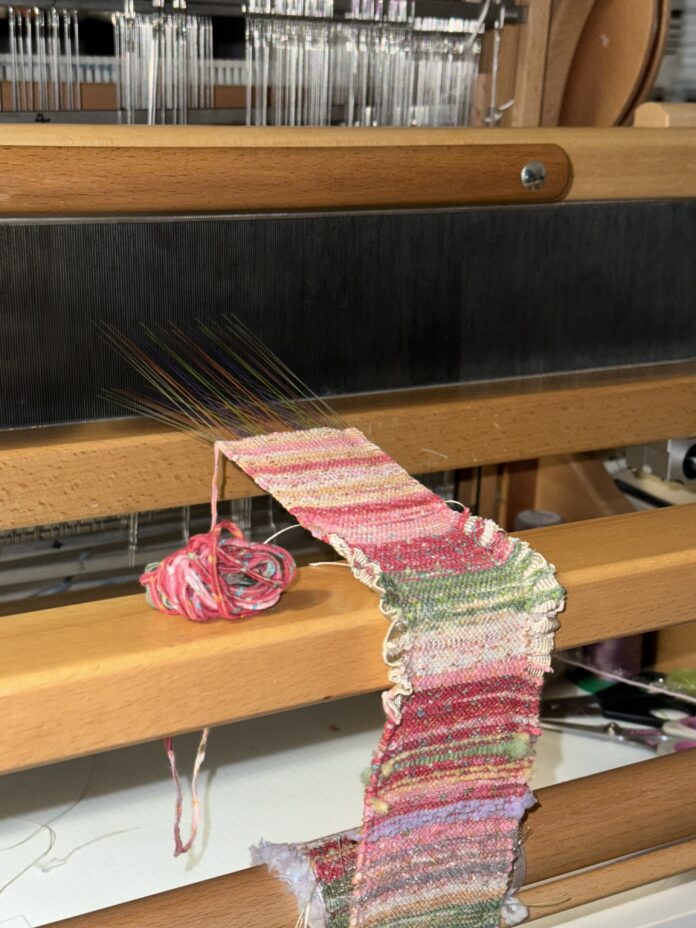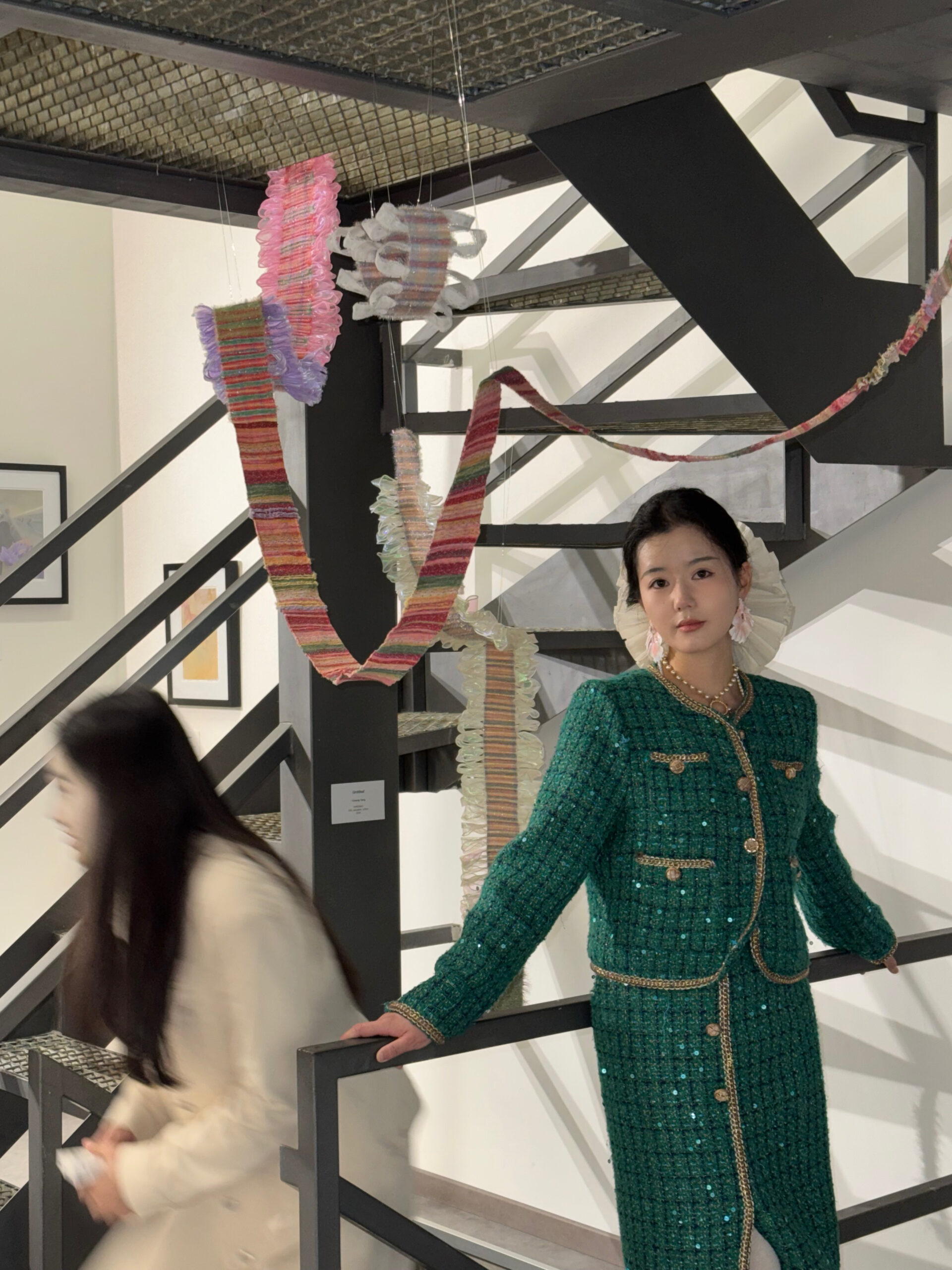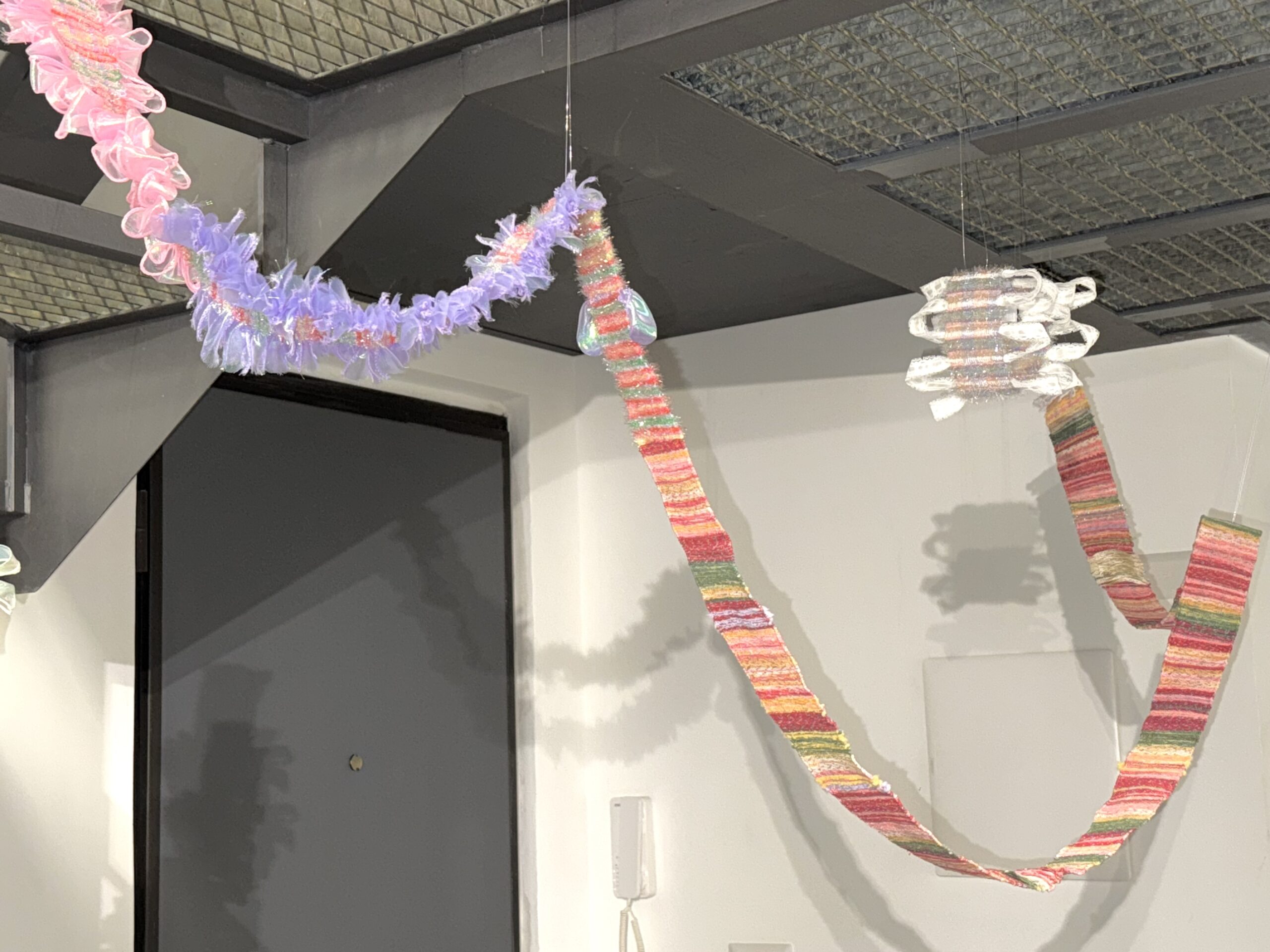At a time when much of contemporary textile art pursues precision through digital mastery or post-digital hybridity, Yang Yumeng issues a conceptual challenge with her ongoing work Untitled (2024– ). First exhibited in Milan in December 2024, and measuring 12 meters at the time, the installation has since expanded to over 20 meters as of April 2025. Comprised entirely of studio waste and assembled using a variation of the Chinese traditional Liezhibu (crackle weave) technique, the work resists finality, instead presenting itself as an open-ended process—a material archive that is perpetually in flux.
In direct defiance of the art world’s fixation on completeness, authorship, and fixed form, Yang’s refusal to finish her work reads as both aesthetic and political provocation. At once intensely personal and structurally rigorous, Untitled is built from discarded fragments of past works—reassembled not for reuse, but for redefinition. This act transforms creative residue into conceptual fuel.
Exhibition and Material Ethics
The reception of the work during its Milan showing sparked considerable critical attention. Some praised its embrace of fragmentation as a regenerative gesture; others questioned whether the refusal to resolve a work risks falling into performative incompleteness. But such critique overlooks the core of Yang’s method: an embedded material ethics that interrogates how value, waste, and process are framed within contemporary art systems.
The work’s subsequent expansion to 20 meters is not merely a logistical change but a conceptual intensification. It repositions the textile from static object to living system—a breathing document of accumulated time, failure, repetition, and renewal. In doing so, Yang advances an alternative temporality that runs counter to the finished-product logic of capitalist production.
Gender, Craft, and the Poetics of Refusal
Born and raised in a region with a significant Yi minority population in China, Yang’s return to visit local women engaged in traditional embroidery practices informs her approach—not as mimicry, but as critical encounter. Notably, she foregrounds the creative intelligence of using leftover scraps, rejecting both exoticization and victimization. In her own words: “Sympathy is the luxury of the privileged.” This is not a project that celebrates scarcity; rather, it insists on recognizing beauty as resistance, even in marginal conditions.
By drawing on a historically feminized craft medium and refusing to finish her work, Yang mounts a subtle but forceful critique of both the masculinized cult of completion and the commodification of textile labor. Her weaving is not merely decorative; it is theoretical, feminist, and insurgent.
Visual Language and Critical Frameworks
Formally, Untitled refuses aesthetic coherence. The surface is unruly—tonally inconsistent, frayed, and visibly spliced. There is no central motif, no orchestrated palette, no diagrammatic plan. Instead, the textile embodies what theorist Rozsika Parker termed “the subversive stitch”—an interruption of expectation through material discontinuity. It also recalls the work of El Anatsui, whose monumental tapestries made from industrial detritus interrogate consumer cycles, though Yang’s scale is intimate and emotionally raw by contrast.
What she offers is a visual logic of rupture and recovery—a method of thinking-through-making where formal incompleteness is not deficiency, but a deliberate ethical stance.
Critical Recognition and Future Relevance
Leading critics, including myself and colleagues across Europe and Asia, have recognized Yang’s work as one of the most urgent contributions to contemporary fiber practice in the post-pandemic period. Her Milan presentation and subsequent studio-led expansions have already generated invitations for further exhibitions and publications.
In Contemporary Textile Review’s spring symposium, Yang’s installation was referenced repeatedly as an exemplar of transnational material politics—its integration of indigenous techniques, feminist theory, and waste economies positioned as a template for future craft-based research.
Yang Yumeng’s Untitled is not an unfinished artwork—it is a perpetually finishing one. It does not merely recycle material but reconfigures the grammar of textile itself. By embracing rupture, excess, and incompletion, Yang confronts us with the uncomfortable truth: that beauty, memory, and authorship do not emerge despite fragmentation, but precisely through it.
Her work is not only a testament to personal history, but also a critical intervention in global conversations on sustainability, authorship, and the ethics of making. And in declaring that the work will never be complete, Yang has paradoxically delivered her most complete statement yet.



